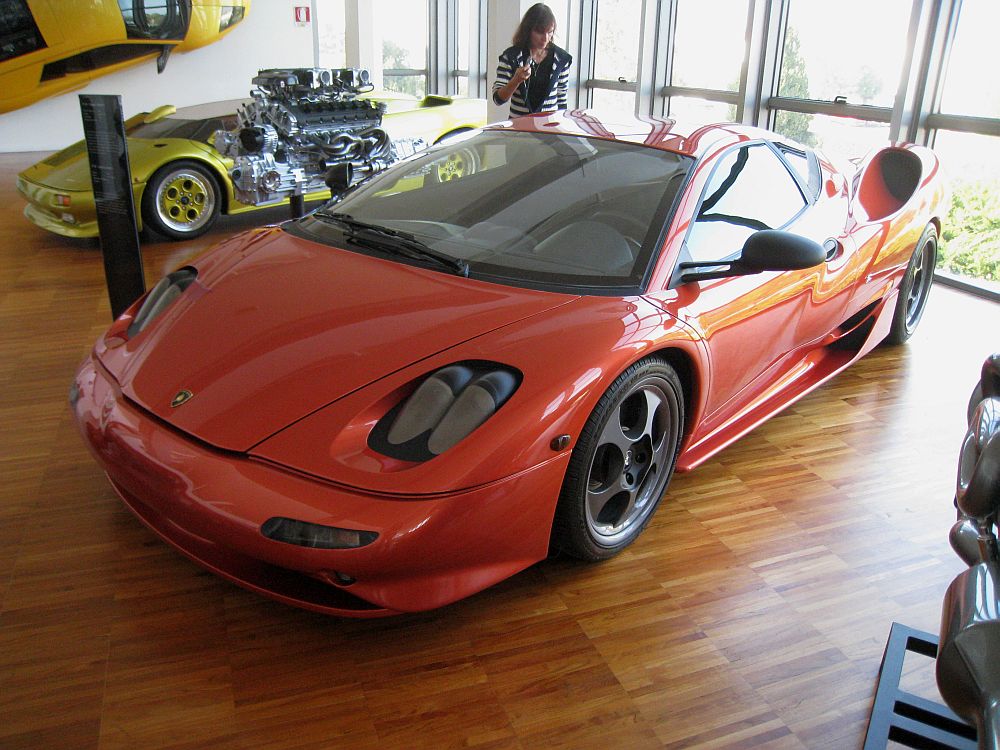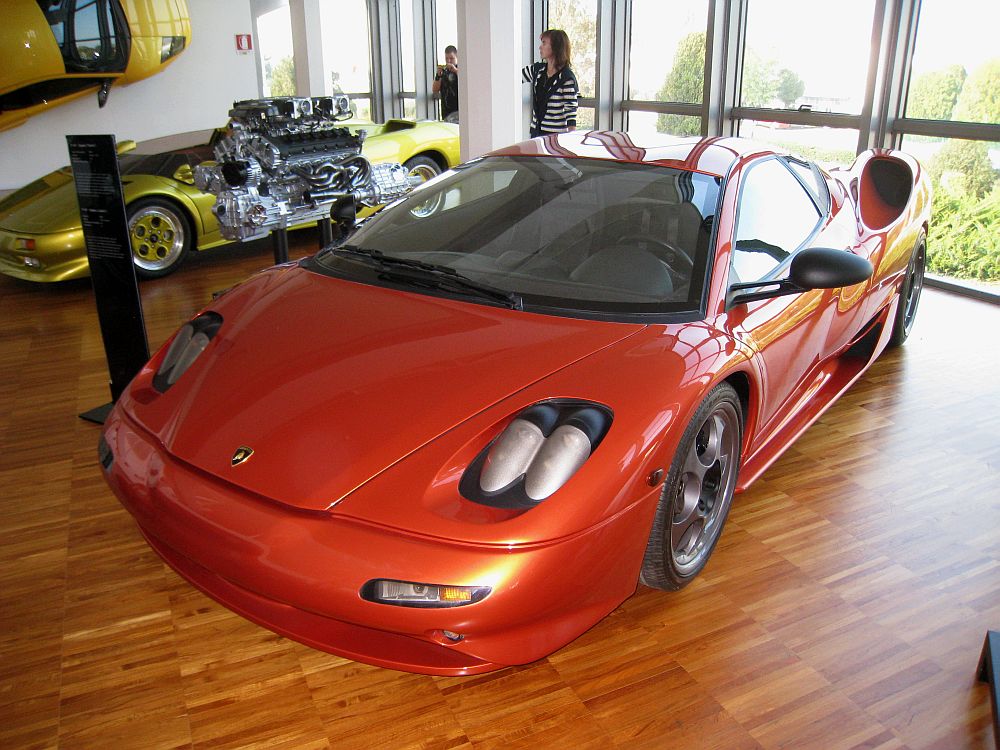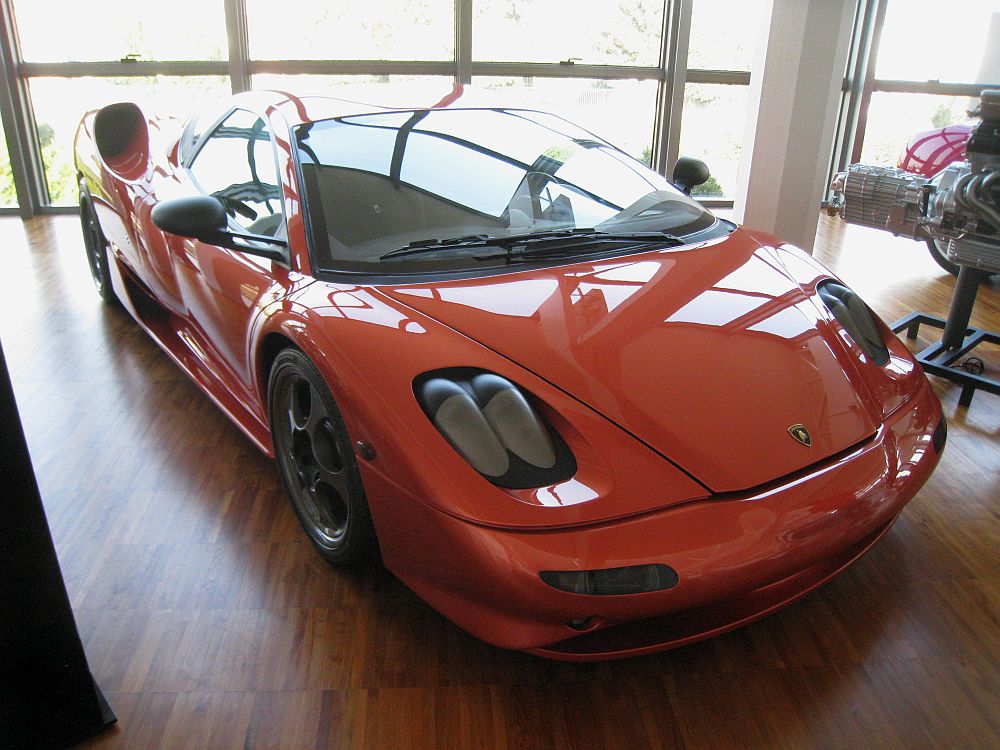Description
The Lamborghini P147 Zagato Kanto, unveiled at the 1996 Geneva Motor Show, was an audacious concept car that marked a fascinating collaboration between Lamborghini and the legendary Milanese coachbuilder Zagato. It was based on the underpinnings of the Diablo and represented an exploration of what the next generation of Lamborghini supercars could look like. The Kanto—named after the strong, cold winds that sweep across Japan’s Kanto plain—was designed as a bold stylistic statement at a time when Lamborghini was once again searching for its identity and direction. Although it never reached production, the P147 Kanto remains one of the most distinctive and misunderstood chapters in Lamborghini’s design history.
The P147 project had originated several years earlier as part of Lamborghini’s plan to develop a smaller, mid-engine V10 sports car to complement the Diablo. However, by the mid-1990s, under the ownership of the Indonesian investment group Megatech, the project’s scope shifted. The Kanto was created as a design exercise built on a modified Diablo chassis, intended to demonstrate Lamborghini’s ability to evolve beyond the sharp-edged wedge aesthetic that had defined its cars since the Countach. Zagato was commissioned to reimagine the car’s visual language, resulting in a design that broke dramatically from tradition while still maintaining the proportions and aggression expected of a Lamborghini.
The Kanto’s design was both futuristic and unconventional. Andrea Zagato and his team sought to blend aerodynamics with sculpture, resulting in a car that appeared organic and muscular rather than geometric. The front end featured smooth, rounded surfaces and large elliptical headlights—an immediate departure from the angular motifs of earlier Lamborghinis. The nose was low and aerodynamic, with broad air intakes and a subtle integrated splitter. Along the sides, the Kanto’s body curved inward between the fenders, creating a waistline that accentuated the car’s stance and gave it a dynamic, almost biological flow.
At the rear, the design became even more distinctive. The engine cover was dominated by a large central air intake feeding the V12, flanked by sculpted buttresses that evoked the Miura’s flowing forms. The taillights were minimalist, set into a broad, recessed panel framed by aerodynamic ducts. Overall, the Kanto’s design was a study in contrasts—sleek and fluid from some angles, yet muscular and powerful from others. Finished in metallic silver, it appeared more refined and understated than the flamboyant Lamborghinis of the past, yet unmistakably exotic.
Underneath its avant-garde bodywork, the P147 Zagato Kanto retained the mechanical foundations of the Diablo. Power came from Lamborghini’s 5.7-litre naturally aspirated V12 engine producing around 492 horsepower, paired with a five-speed manual transmission driving the rear wheels. The chassis was constructed from tubular steel, with fully independent suspension and large ventilated disc brakes—typical of Lamborghini’s engineering philosophy at the time. Performance figures were never officially published, but with its lightweight body and proven drivetrain, the Kanto would likely have matched or exceeded the Diablo’s capabilities, with a top speed near 325 km/h (202 mph) and 0–100 km/h (62 mph) acceleration in around 4.2 seconds.
Inside, the Kanto’s cabin reflected Zagato’s preference for clean, driver-focused simplicity. The dashboard was uncluttered, with digital instrumentation and minimalist switchgear. The seating was low and enveloping, trimmed in soft leather and Alcantara, while visibility was improved compared to the Diablo thanks to a higher windscreen and thinner pillars. The interior design, like the exterior, represented a shift toward modernity—a move away from the theatrical and toward the purposeful.
When it debuted at Geneva in 1996, the Kanto generated mixed reactions. Some critics praised its originality and aerodynamic fluidity, while others felt it lacked the aggressive edge that defined Lamborghini’s design DNA. The smoother, more organic shapes seemed at odds with the sharp, angular lineage of the Countach and Diablo, and the car’s understated elegance was perhaps too subtle for an audience accustomed to Lamborghini’s visual drama. Still, the Kanto demonstrated that Lamborghini was willing to experiment with new forms and explore partnerships that could redefine its aesthetic boundaries.
Unfortunately, the timing of the Kanto’s debut coincided with another period of corporate upheaval. Megatech’s financial troubles and Lamborghini’s subsequent sale to Audi in 1998 effectively ended the project before it could evolve beyond the prototype stage. Audi’s new management chose to focus on stabilizing production and developing the next-generation Murciélago, meaning the P147 Kanto became a creative dead end rather than a stepping stone to production.
In retrospect, the Kanto can be seen as a fascinating bridge between eras. Its smoother, aerodynamically influenced design anticipated the styling trends that would later appear in the Murciélago and Gallardo, where Lamborghini began to balance aggression with refinement. It also showed how Zagato’s design language—traditionally associated with lightweight, hand-built GT cars—could intersect with the exotic aggression of Lamborghini’s V12 tradition.
Today, the Lamborghini P147 Zagato Kanto remains a one-off prototype preserved as a rare symbol of creative experimentation. Its importance lies not in its commercial potential but in its willingness to challenge expectations and rethink what a Lamborghini could look like. The Kanto was neither a failure nor a misstep—it was a reminder that Lamborghini, even amid uncertainty, never stopped innovating or questioning its own conventions.
The P147 Zagato Kanto stands as a testament to design freedom and to a moment when Lamborghini dared to step outside its comfort zone. Though it never entered production, it continues to fascinate enthusiasts as a unique intersection of two of Italy’s greatest automotive houses—a meeting of Lamborghini’s raw power and Zagato’s sculptural elegance, frozen in a single, unforgettable prototype.



